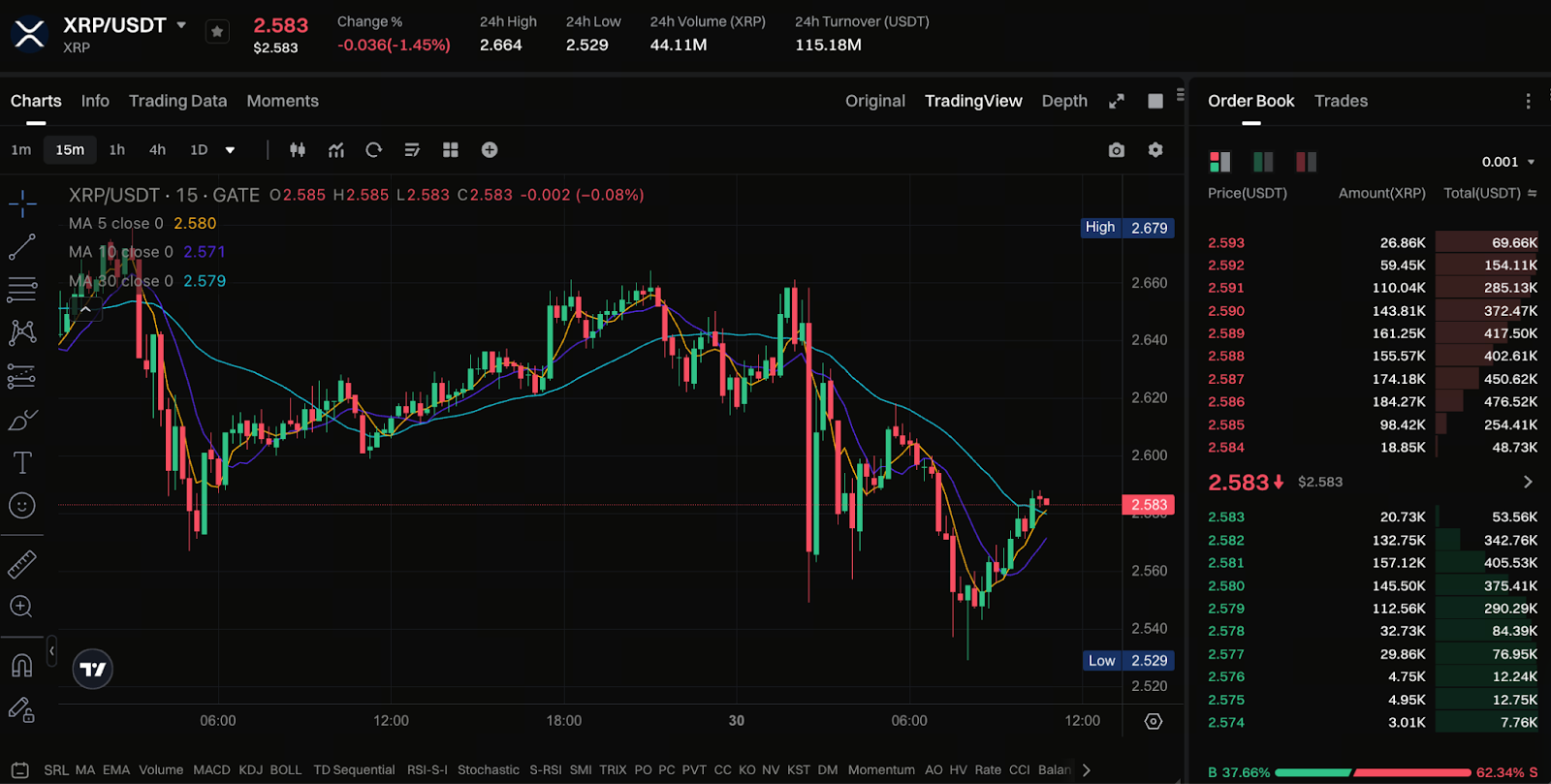Could XRP Drop to $1?
What Is XRP?
XRP is a cryptocurrency developed by Ripple and operates on the XRP Ledger. It was originally designed to facilitate cross-border payment settlements between banks and financial institutions. Unlike platforms focused solely on store of value or smart contracts, XRP aims to bridge traditional finance and liquidity. Understanding XRP’s role helps beginners assess the factors beyond speculation that influence its price trends.
Latest Updates: Price Pullback and Rumor Clarification

Chart: https://www.gate.com/trade/XRP_USDT
XRP recently attempted a rebound but then saw a notable pullback, dropping over 1.4% in the past 24 hours, with trading around $2.58 USD.
Meanwhile, Ripple’s CTO, David Schwartz, addressed rumors about a “$1 billion XRP vault.” A company named Evernorth announced plans to raise more than $1 billion via a Nasdaq listing, focusing on holding XRP. Schwartz clarified that he only serves as an advisor, with limited involvement and no full-time commitment. For beginners, these updates signal two key points: technical weakness in the market, and the potential for market rumors or interpretations to be overstated.
Is There a Case for XRP Falling to $1?
The rationale behind the extreme expectation of “XRP dropping to $1” can be summarized as follows:
- If key support levels are breached, technical factors could trigger accelerated declines.
- If overall market sentiment turns extremely bearish or capital exits in large volumes.
- If fundamentals deteriorate due to major negative events (such as failed rumors, partnerships falling through, or regulatory crackdowns).
A decline to $1 would require multiple triggers to occur simultaneously. The prevailing consensus does not view $1 as the most probable short-term range. Beginners should consider this a low-probability but high-impact scenario, not the most likely outcome at present.
Key Support and Resistance Levels
Technical analysis for XRP currently highlights these price points:
- Support: The $2.18 USD level serves as a support level. Continued pressure here could see prices drop to $2.00 USD or lower.
- Resistance: Previous rebound attempts met resistance near $2.60 USD. A successful break above this level could push prices toward the $3+ USD range.
Price tends to move between support and resistance levels, with breakouts in either direction can add momentum to price movements. A drop below support poses greater risks than a first touch at support.
Investment Tips and Risk Management for Beginners
Given the current technical outlook, beginners investing in XRP or similar assets should consider the following strategies:
- Define clear entry and exit plans: For instance, if the price falls below your established support, consider exiting or reducing your position.
- Manage your position size: Avoid putting all your capital into one asset or betting on extreme outcomes (like a $1 drop).
- Resist impulsive decisions: Headlines forecasting drops to $1 or crash predictions can trigger panic, but decisions should rely on data and context.
- Analyze from multiple perspectives: Evaluate price, fundamentals (partnerships, regulation, development progress), and market sentiment.
- Long-term vs. short-term: If your approach is long-term, focus on the project’s enduring value; if trading short-term, technical and sentiment factors become more critical.
Conclusion: Rational Perspective on Extreme Scenarios
On the whole, XRP falling to $1 is not the scenario most analysts expect right now, yet it remains a possibility. Recent developments show a pullback, tested support, and clarified market rumors—all signals of risk. For beginners, rather than fixating on the possibility of an extreme drop to $1, focus on identifying support zones, anticipating price movements after breakouts, and understanding your own risk tolerance. Prioritize rational decision-making and thorough preparation rather than reacting to sensational headlines.
While extreme scenarios may seem tempting, beginners are best served by a disciplined strategy.
Related Articles

Pi Coin Transaction Guide: How to Transfer to Gate.io

Flare Crypto Explained: What Is Flare Network and Why It Matters in 2025

What is N2: An AI-Driven Layer 2 Solution

How to Use a Crypto Whale Tracker: Top Tool Recommendation for 2025 to Follow Whale Moves

Understand Baby doge coin in one article
